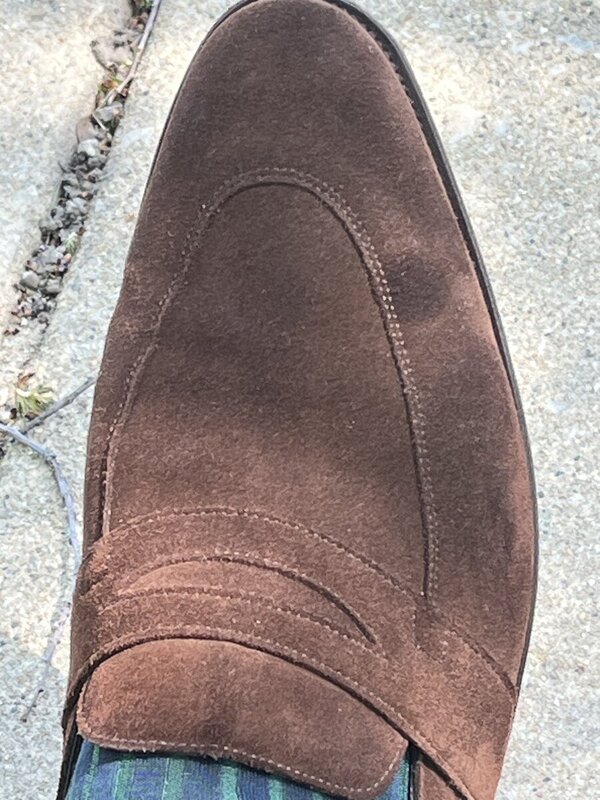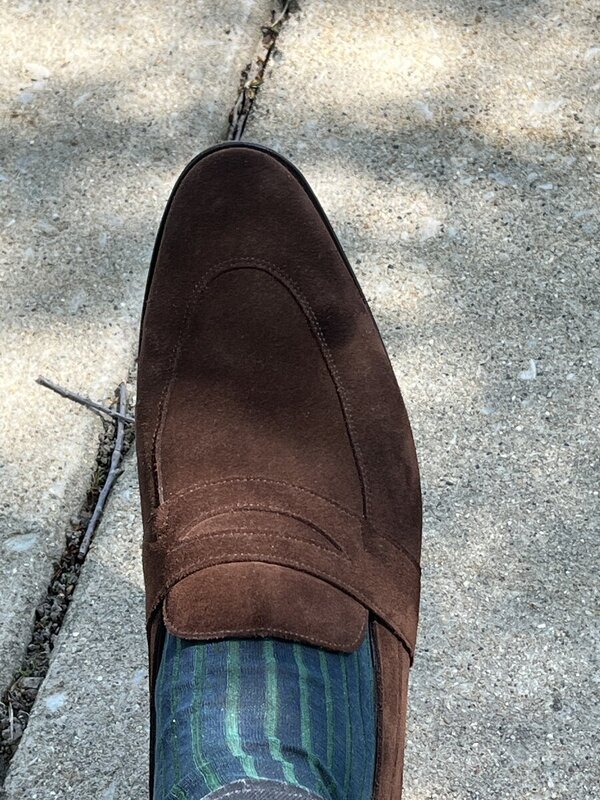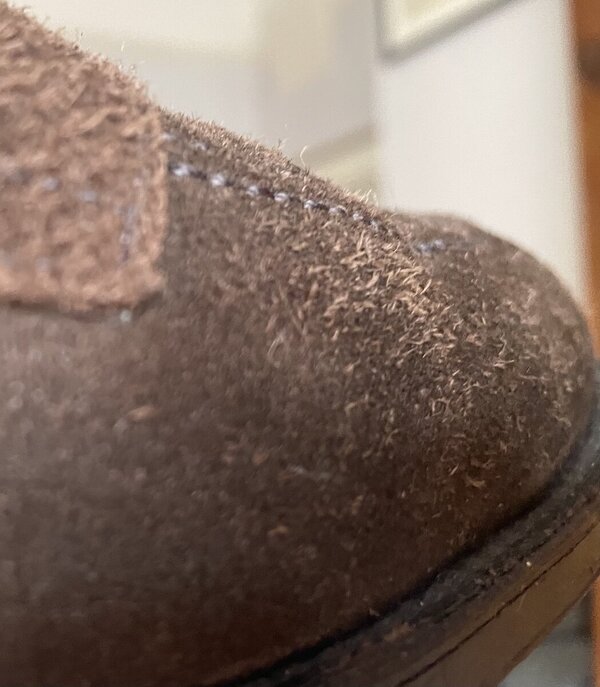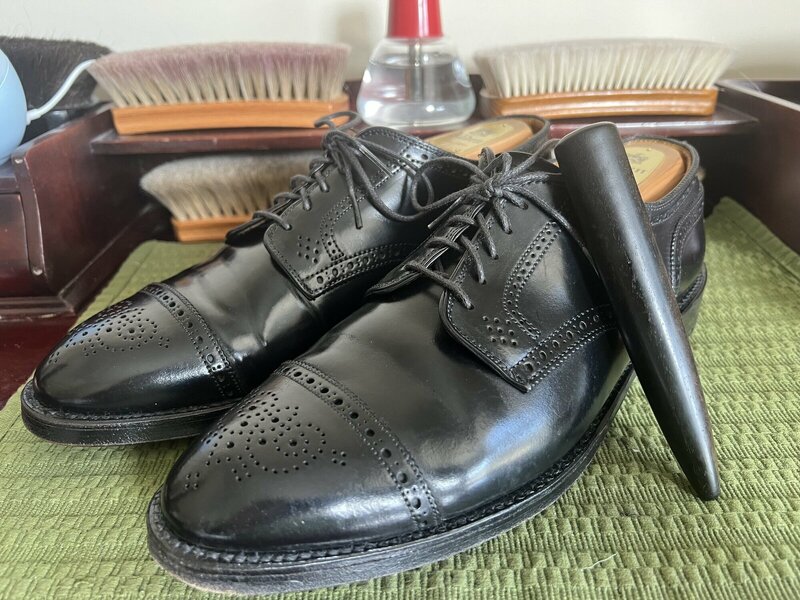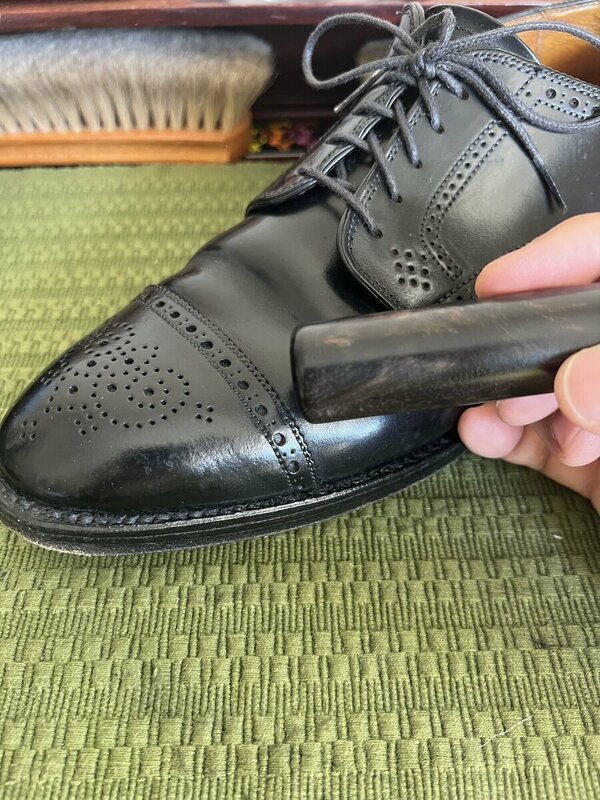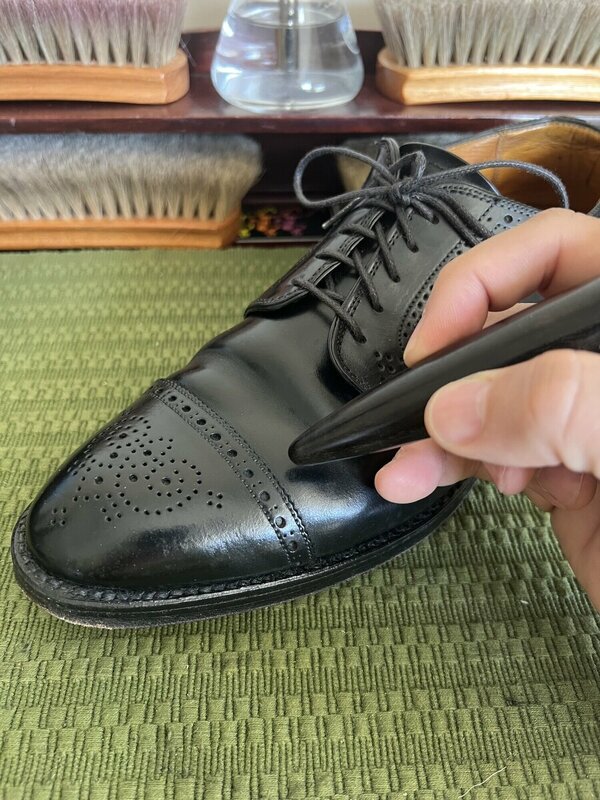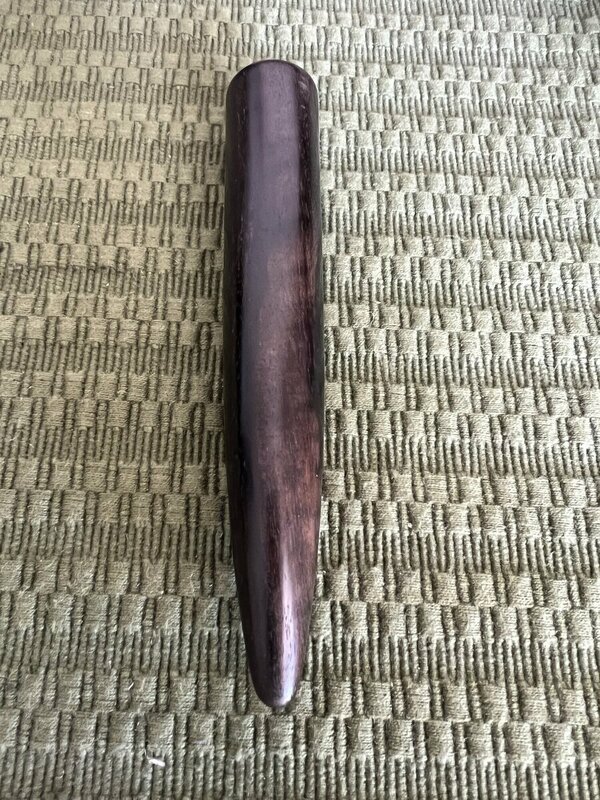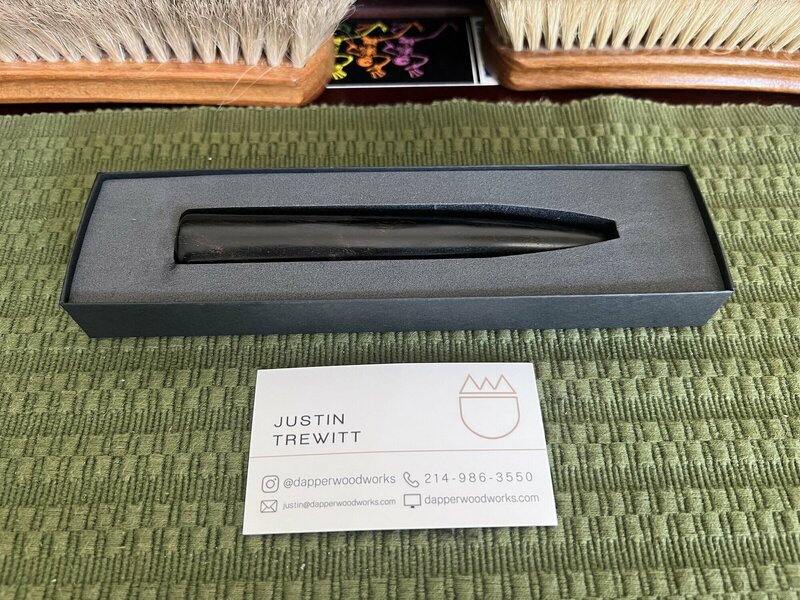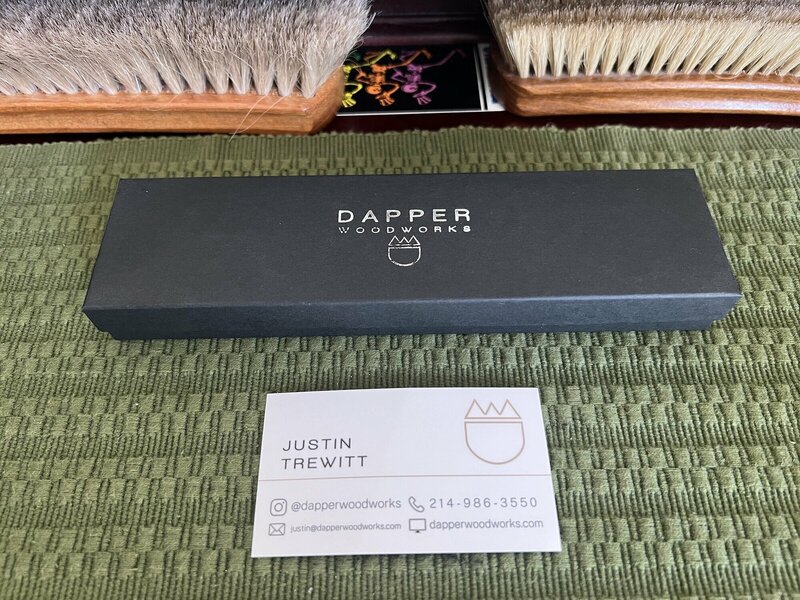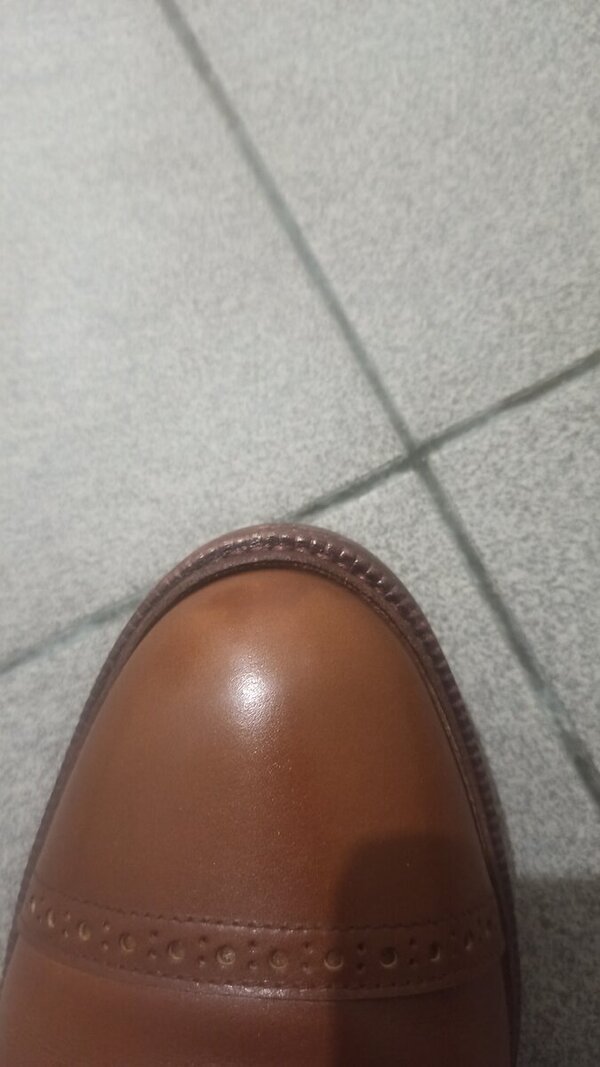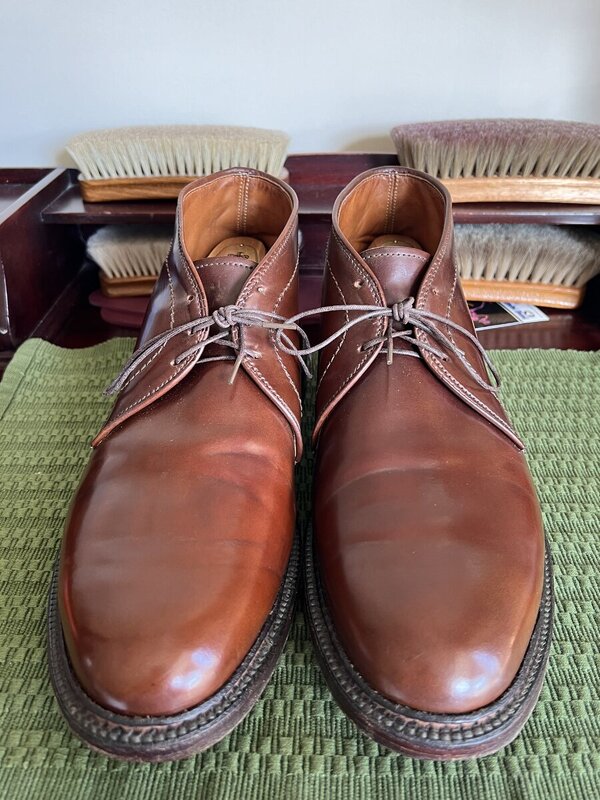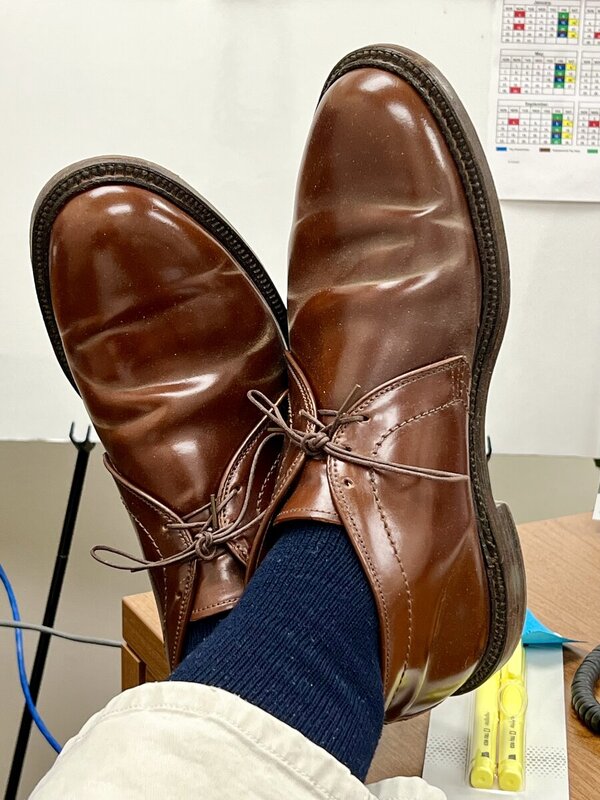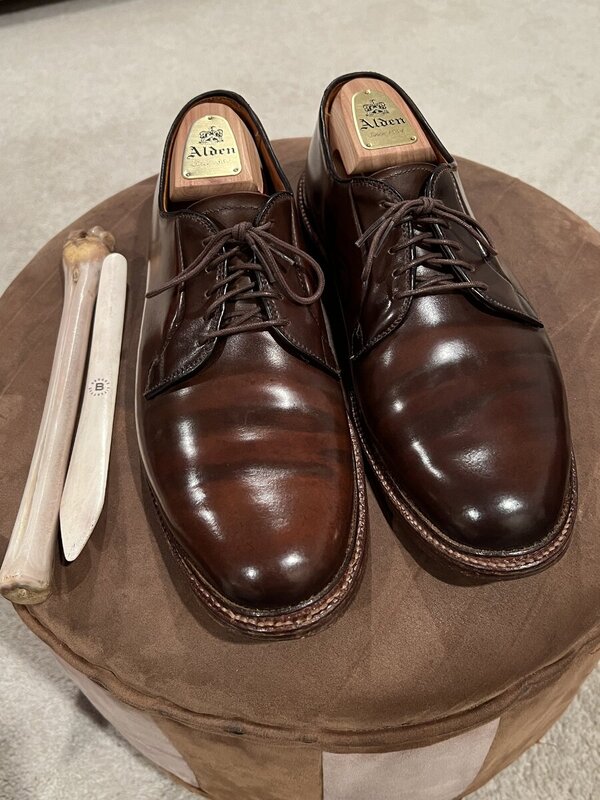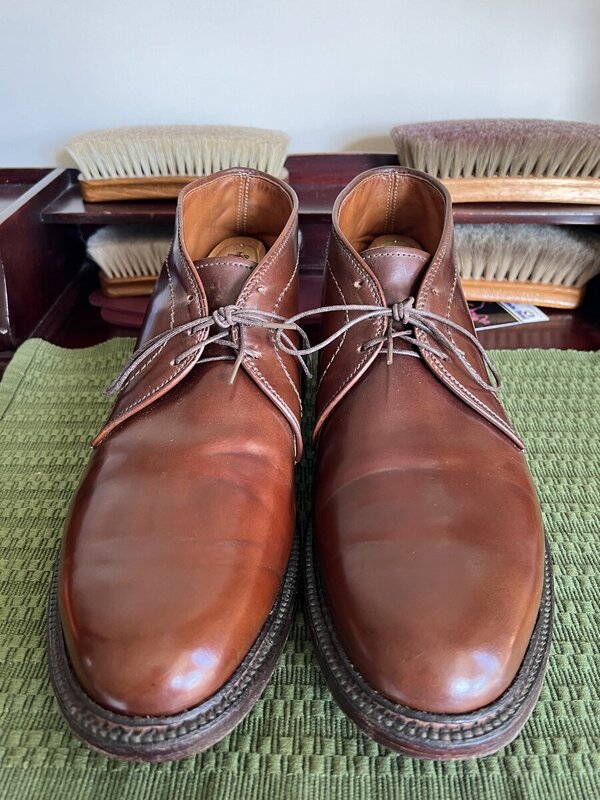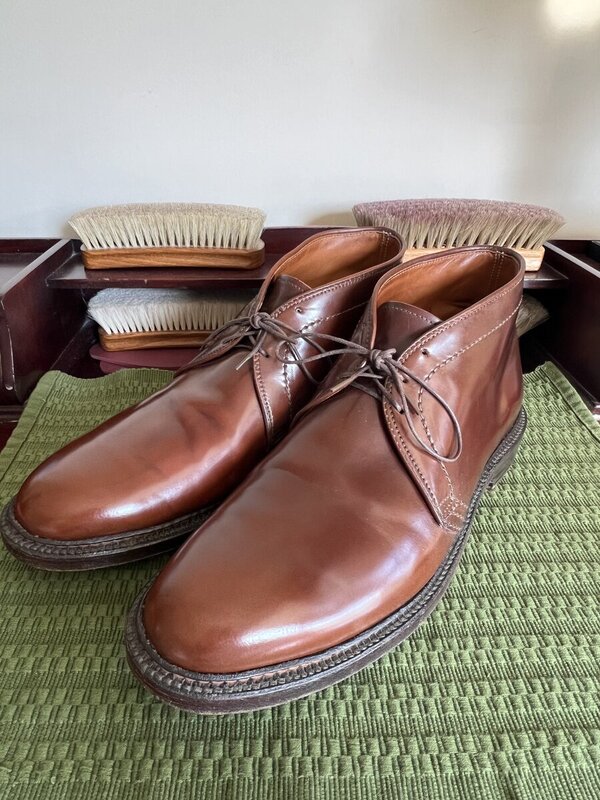MDeKelver
Senior Member
- Joined
- Mar 20, 2013
- Messages
- 361
- Reaction score
- 52
Look at your lacing pattern. If you have standard lacing, and it is always left under right, then as you walk, the tongue is going to be pulled in the way of the lace friction. So change your lacing, alter under/over at each hole pair. It is basically a slab of leather being slid across a diagonal set of ribs. It is going to fall to one side.That does seem to be a very neat solution. I also considered just having my leather guy sew a leather "lace loop" onto the tongue itself. Only issue there would be sourcing the exact same burgundy suede as used on the tongue.
After removing the laces, I have determined that the tongue itself was sewn on at a bit of a slant. Very slight, but enough to let it slide.

















